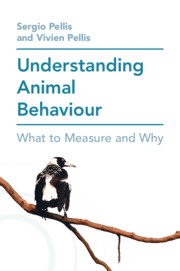Book contents
- Frontmatter
- Contents
- Preface
- Acknowledgements
- 1 What Is the Problem and What Is the Solution?
- 2 Behaviour as a Means, Not an End
- 3 The Deep Structure of Behaviour
- 4 The Brain Is Not Alone
- 5 Bringing It All Together: Steps in the Descriptive Process
- 6 What of the Future?
- Epilogue
- Appendix A: Eshkol-Wachman Movement Notation and Descriptive Analysis
- Appendix B: Practice, Practice, Practice
- References
- Index
4 - The Brain Is Not Alone
Published online by Cambridge University Press: 11 May 2021
- Frontmatter
- Contents
- Preface
- Acknowledgements
- 1 What Is the Problem and What Is the Solution?
- 2 Behaviour as a Means, Not an End
- 3 The Deep Structure of Behaviour
- 4 The Brain Is Not Alone
- 5 Bringing It All Together: Steps in the Descriptive Process
- 6 What of the Future?
- Epilogue
- Appendix A: Eshkol-Wachman Movement Notation and Descriptive Analysis
- Appendix B: Practice, Practice, Practice
- References
- Index
Summary
Knowing the perceptions that an animal controls and the brain-based rules that regulate which actions are performed may not be sufficient to explain the overt behaviour performed. The reason for this is that the animal’s particular body anatomy and the structure of the environment within which the actions are performed may constrain them to a particular form. To be certain that it is perceptions or intrinsic motor organisation that is responsible for the behaviour being expressed, the role of body anatomy and environmental context needs to be assessed. These are the third and fourth principles of behavioural organisation. Without taking these principles into account, the behavioural markers selected for measurement may be misleadingly attributed to neural causes and evolutionary processes.
- Type
- Chapter
- Information
- Understanding Animal BehaviourWhat to Measure and Why, pp. 61 - 74Publisher: Cambridge University PressPrint publication year: 2021

